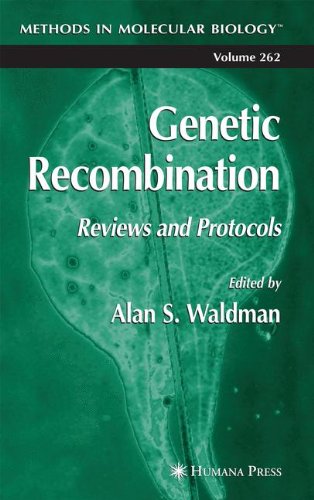

Most ebook files are in PDF format, so you can easily read them using various software such as Foxit Reader or directly on the Google Chrome browser.
Some ebook files are released by publishers in other formats such as .awz, .mobi, .epub, .fb2, etc. You may need to install specific software to read these formats on mobile/PC, such as Calibre.
Please read the tutorial at this link. https://ebooknice.com/page/post?id=faq
We offer FREE conversion to the popular formats you request; however, this may take some time. Therefore, right after payment, please email us, and we will try to provide the service as quickly as possible.
For some exceptional file formats or broken links (if any), please refrain from opening any disputes. Instead, email us first, and we will try to assist within a maximum of 6 hours.
EbookNice Team

Status:
Available4.4
9 reviews
ISBN-10 : 1617374423
ISBN-13 : 9781617374425
Author: Alan S. Waldman
Genetic recombination, in the broadest sense, can be defined as any process in which DNA sequences interact and undergo a transfer of information, producing new “recombinant” sequences that contain information from each of the original molecules. All organisms have the ability to carry out recombination, and this striking universality speaks to the essential role recombination plays in a variety of biological processes fundamentally important to the maintenance of life. Such processes include DNA repair, regulation of gene expression, disease etiology, meiotic chromosome segregation, and evolution. One important aspect of recombination is that it typically occurs only between sequences that display a high degree of sequence identity. The stringent requirement for homology helps to ensure that, under normal circumstances, a cell is protected from deleterious rearrangements since a swap of genetic information between two nearly identical sequences is not expected to dramatically alter a genome. Recombination between dissimilar sequences, which does happen on occasion, may have such harmful consequences as chromosomal translocations, deletions, or inversions. For many organisms, it is also important that recombination rates are not too high lest the genome become destabilized. Curiously, certain organisms, such as the trypanosome parasite, actually use a high rate of recombination at a particular locus in order to switch antigen expression continually and evade the host immune system effectively.
why is genetic recombination important for species
when does genetic recombination occur
types of genetic recombination
last war genetic recombination
identify the types of genetic recombination
Tags: Genetic Recombination, Recombination, Protocols, Alan Waldman